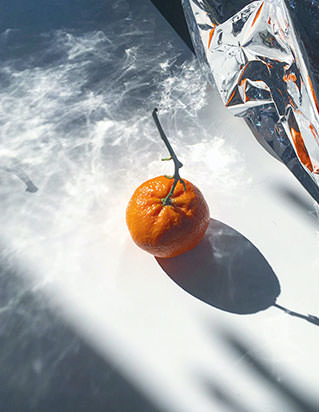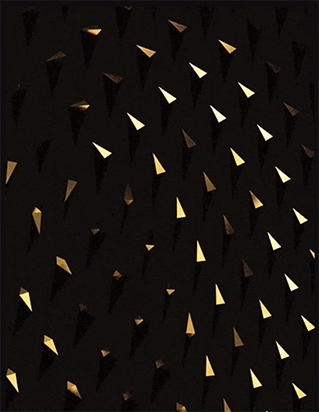On Slowness
Sonic Field Vol. I: Slowness
Sonic Field begins a new phase today, evolving into a platform for research, experimentation, and publication based on a quarterly theme that will integrate events, articles, sound pieces, and other exploratory formats. During each cycle, there will be an ongoing call for articles, essays, sound papers, and audio essays that will form a new issue of our journal, addressing
In its first issue, Sonic Field invites us to reflect on slowness from a conceptual and sensitive perspective. In a culture governed by capitalism and its frenetic and oppressive rhythms, slowness emerges as a device of opposition and disobedience to this economic model and its effects on our individual and collective well-being. In this issue, Sonic Field explores an enriching and critical slowness, capable of promoting a reciprocal and generous relationship with our increasingly vulnerable social and ecosystemic environment.
Is slowness possible, or can it only be understood in terms of deceleration? What sensitive, musical, technological, and critical considerations are sound artists adopting to address slowness in their works? To what extent do their works allow us to conceive ways of resisting and disobeying the frenetic and oppressive rhythms imposed by capitalist culture? How can these creative processes help find ways to stimulate individual and collective well-being? How does the artistic-sound exploration of slowness connect with the current precarization suffered by the arts within a capitalist economy? How does slowness through listening fit into current discussions about accelerationist ecology paradigms?
On Slowness in Artistic Practices
The Slow Art movement emerged in the 20th century as a strategy to foster sensitive engagement with works of art on the part of the viewer, as a response to the rapid consumption common in galleries, museums, and concert halls. Inspired by the Slow Food gastro-agricultural movement, Slow Art promotes contemplative practices by encouraging visitors to be generous with the time they dedicate to their experience of each work, in order to establish an emotional and intellectual connection with them and their creators. This is in contrast to the production of value judgments and hasty interpretations and analyses that can predominate in exhibition and publishing contexts. Slow Art invites us to become aware of how we experience art, based on the meditative nature that the experience of its works acquires. Among the precursors of Slow Art are Peter Ablinger, John Cage, Christian Marclay, Pauline Oliveros, and Eliane Radigue, in sound practice, and Mark Rothko, Hélio Oiticica, Lygia Clark, James Turrell, and Agnes Martin, in visual art. The influence of these and other artists exploring slowness takes on special relevance today, as we are subject to information overload, displacement, and instant gratification, where slowness emerges as a form of cultural and political resistance. Slow Art also aligns with the ecological awareness of contemporary practices, inviting us to take the time to observe and listen, in order to establish a deeper connection with our ecosystem. Furthermore, this movement has influenced the production of works that offer therapeutic benefits, where, through sensations of calm and well-being, the viewer is able to appreciate the work in detail and depth.
Slowness was the central theme of the 2021 TarraWarra Art Biennial in Australia, curated by Nina Miall, who invited participants to draw inspiration from the word Tarrawarra used by the Indigenous Woiwurrung community, meaning “slow-flowing water.” Miall approached slowness as an act of resistance against accelerationism, emphasizing the contrast between the slow temporalities associated with ancestral Woiwurrung culture and its regional environment, and the accelerated temporalities of the neoliberal model that governs this country. Through her curatorship, Miall presented a series of environmental concerns, merging the political with the poetic, with the aim of promoting slow and transformative processes in art, and its ability to reveal the richness of time and experience. This exhibition featured Megan Cope’s work Currents III (freshwater studies), composed of slowly melting ice sculptures, proposing a long-term experience.
Another important reference in the exploration of slowness in art is the Slow Listening project by Marit J. MacArthur and Lee M. Miller, who approach slowness as a narrative and critical research device, capable of creating methodologies and tools for the analysis of pitch and time patterns. This project promotes slowness by:
- Exercising repeated listening
- Analyzing our listening habits, assumptions, biases, and expectations, which are often based on the author’s identity and our own listening histories
- Quantifying sound patterns, such as pitch, time, and intensity, as physical phenomena
- Studying time patterns (such as pause length and speed) and intensity patterns (volume or amplitude)
- Finally, the Slow Research Lab is a multidisciplinary research and curatorial platform based in the Netherlands, led by Carolyn F. Strauss. This project addresses slowness as: “the search for holistic ways of knowing oneself, encountering others, sharing knowledge, and evolving in community toward more harmonious and resilient ways of living.”
Other References
The Slow Food movement emerged in the 1960s in Italy as a gastronomic and agricultural practice of resistance to the acceleration of industrial food consumption and production. Slow Food invites farmers, merchants, chefs, and diners to engage throughout the entire food production and consumption process, ensuring fresh ingredients obtained through ecological and ethical practices. This approach not only champions the sensorial pleasure of food but also fosters a sustainable and reciprocal relationship with the environment, based on sustainability, diversity, and reciprocity. Slow Food invites us to a slow and conscious experience, where each ingredient and each act of preparation becomes a way of inhabiting time in a critical and meaningful way. In this sense, slowness in food and art intertwine as strategies of opposition to the contemporary vortex, reclaiming the value of processes, sensitivity to what nourishes us, and the possibility of a more harmonious coexistence with our ecosystems.
In Dromology, Paul Virilio philosophically critiques acceleration as a tool of control in modernity, arguing that speed generates instability and that slowing down is a form of resistance. In Resonance and Social Acceleration, sociologist Hartmut Rosa explores how modern life constantly accelerates (social acceleration) and how true fulfillment emerges from the resonance between deep and meaningful connections that require slowness. In La Durée, philosopher Henri Bergson draws a parallel between measured time (chronos) and lived time (duration), arguing that real experience is qualitative, not mechanical, and that slowness allows for a deeper experience with one’s environment. In The Burnout Society, Byung-Chul Han philosophically critiques the neoliberal culture of productivity and argues that slowing down is an antidote to the burnout caused by constant self-optimization.




